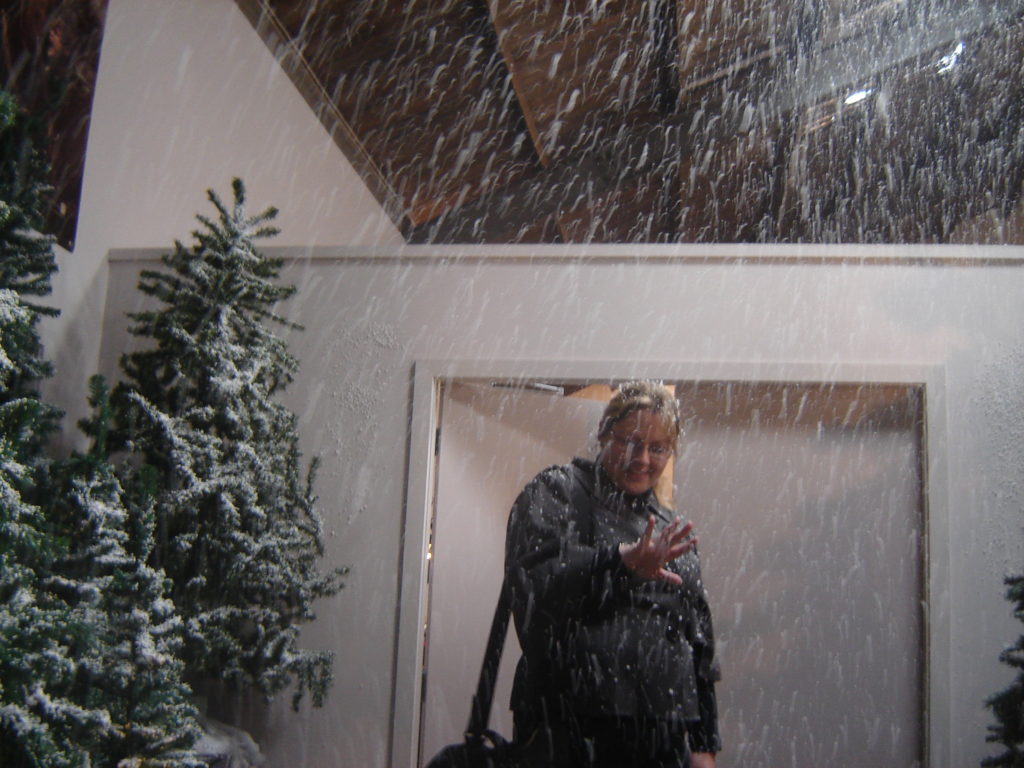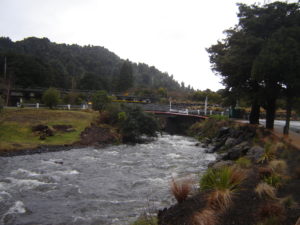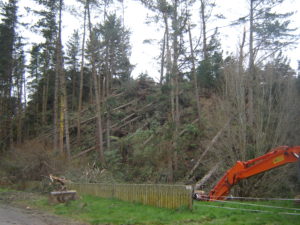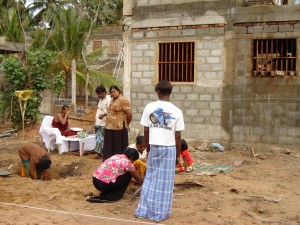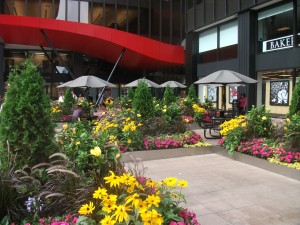There was a time not long ago, in human history, when a faraway nation could experience a wrenching natural disaster that most of the rest of us would not know about for months, or even years, afterwards. The idea that anyone else should or could help the stricken cities or nations recover would have seemed foreign, if not utterly impractical. Help from the U.S. federal government for San Francisco following the 1906 earthquake was minimal and slow to arrive. American involvement in an earthquake at the time in China would have seemed preposterous and quixotic.
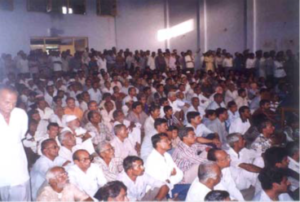
2002 planning meeting in Bhuj following the 2001 Gujarat earthquake. Photo by B.R. Balachandran, Environmental Planning Collaborative, Ahmedabad, obtained from Robert Olshansky.
Modern transportation and communications have changed all that, and as we became more instantly aware of hurricanes in Florida, earthquakes in Japan, and volcanoes in the Philippines, we began to realize that there were ways to help—and much to learn. Governments became more aware of a responsibility to assist with planning for long-term recovery, and the field of urban planning, which for decades saw natural hazards as outside its purview, by the 1980s began to undertake systematic studies of how to make recovery more effective. As disasters became more expensive in light of widespread urbanization in recent decades, the stakes have risen dramatically. Researchers and practitioners over the past 40 or 50 years have exchanged data and ideas at major international and national conferences, and national and local policies on post-disaster recovery have evolved rapidly. One can now find a substantial literature on the topic.
One recent and noteworthy entry into this literature is After Great Disasters: An In-Depth Analysis of How Six Countries Managed Community Recovery (Lincoln Institute of Land Policy, 2017; 380 pp.). The authors, Laurie A. Johnson and Robert B. Olshansky, are both highly experienced in the international arena and, I will add, good colleagues of mine in this field. Johnson is an independent consultant based in northern California with past ties to various firms engaged in hazards work. She was a major contributor to Planning for Post-Disaster Recovery: Next Generation (2014), a project I led at the American Planning Association. Olshansky is a professor and head of the department of urban planning at the University of Illinois in Champaign-Urbana. The two previously co-authored Clear as Mud (Planners Press, 2010), a book that chronicled recovery planning in New Orleans after Hurricane Katrina.
They have worked in the countries whose disasters they describe in the book: India, Japan, China, New Zealand, Indonesia, and the U.S. These are, of course, vastly different nations in wealth, geography, size, and circumstance, and the question that the authors confront is devilishly simple: Are there lessons from these nations’ experiences in managing long-term community recovery that are transferable? What, pray tell, does flood recovery in Iowa have in common with tsunami recovery in Indonesia or earthquake recovery in India?
My own international experiences have largely been different from those they describe: I have been involved in the Dominican Republic (after Hurricane Georges), Sri Lanka (after the 2004 tsunami), Taiwan, and New Zealand, under varying circumstances, and that very question has grown in my own mind over time. Those experiences have also provided background for assessing the lessons that Johnson and Olshansky derive from the countries they study. I think they do a very solid job of assembling data, shaping the narratives, and drawing useful conclusions from their case studies. At the same time, they make clear what is unique in each country, and where nuances and differences in national frameworks for disaster policy shed light on larger issues.
One fact that is clear from this book is that those national policies are anything but static. Every nation they study is learning from each major disaster and implementing changes over time. Except for New Zealand, these six are large nations with events occurring frequently enough that many of the lessons multiply and reinforce each other. It is equally clear that political history has a major influence on how these nations organize disaster recovery and how it evolves. Teasing out the lessons that are generally transferable is thus devilishly simple. They emerge only after researchers immerse themselves in the details and compare them closely.
For instance, India, like the United States, has a federal system of government. Both nations thus tend to push down to state governments a number of responsibilities that more centralized China and Japan might reserve at the national level. Prior to the 2001 earthquake in Gujarat, a state in India’s northwest, India had only a very small disaster management division within its Ministry of Agriculture, a location within the national bureaucracy that itself speaks volumes about how India once perceived the nature of most disasters.
It is worth noting, however, that the U.S. did not consolidate its own disaster relief and recovery functions within the Federal Emergency Management Agency (FEMA) until 1979, when the agency was created under President Jimmy Carter. The U.S. did not have any federal statutory framework for systematic disaster response until 1950, and created the National Flood Insurance Program in 1968. As the authors explain, the terrorist attacks of September 11, 2001, then completely reshaped the administrative landscape of American disaster management as Congress reacted to those events by creating the Department of Homeland Security and placing FEMA under its umbrella.
The fact that India was at most a generation behind in assuming greater responsibility at the national level should not be surprising in light of its development, but rapid urbanization has also forced reassessment of many issues of federal ministerial structure. India is also a nation that, because of its relative poverty, has relied much more on international assistance, even as it has steadily expanded its home-grown expertise on natural hazards and urban planning.
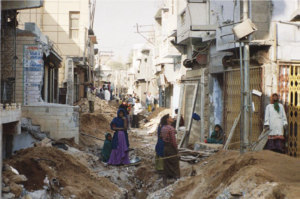
A sewer line is laid in the old city of Bhuj in Gujarat, India, in 2004. Photo by B.R. Balachandran, Environmental Planning Collaborative, Ahmedabad. Reprinted from the book with permission from authors.
Two weeks after the 2001 earthquake, the state established the Gujarat State Disaster Management Authority, led by the chief minister. Like state and national agencies in every other country studied, GSDMA experimented at times, made mistakes and enjoyed successes, and helped rebuild homes and infrastructure. There is no perfect way to recover from disaster, and there are always disappointments. For housing reconstruction, Gujarat, the authors report, employed both an owner-driven plan and a public-private partnership plan. The owner-driven approach had no precedent in India on such a large scale; the earthquake had flattened almost 6,500 buildings and killed 7,000 people. This fact alone illustrates one highly transferable lesson from international experience—that disaster recovery provides a compelling laboratory for such innovation, providing that authorities are prepared to accept the prospect of some measure of failure and to learn from it. A more positive way of making that same point is the “silver lining” theory, which sees disaster recovery as a unique opportunity to advance positive change in a “teachable moment.”
Such lessons take shape in very different cauldrons, however. New Zealand, for instance, which suffered the 2010-2011 earthquakes in Christchurch, the major city of the South Island, has a smaller population than any Indian state or most states in the U.S. The nation is also comparatively prosperous. With only 4.7 million people in an area about 70 percent the size of California, New Zealand has no need to decentralize most government functions, except for rural districts and municipalities. The national government thus found it easy to take control of some recovery functions from the city, and there was no intermediary authority. China, with the world’s largest population, tends to concentrate power but nonetheless also finds some decentralization of recovery functions a practical necessity. In the U.S., however, such power sharing is integral to the system and enshrined in the Constitution. These issues of central authority versus state or provincial and local autonomy tend to set the terms within which the experiments in recovery operate. Moreover, as the chapter on Indonesia following the 2004 tsunami through subsequent lesser disasters illustrates, disaster management institutions are evolving rapidly in developing nations as well as in those with more developed economies such as the U.S. and Japan.
So, what can we learn? This book provides a wealth of detail in its case studies, but the authors note that a key leader of Indonesian recovery efforts stated to them his belief that there are no general lessons to learn because “all disasters are unique.” It is certainly true that each event has its own special context and contours, but that simply makes drawing lessons more challenging, not impossible. The authors conclude with seven recommendations.
The first is to “enhance existing structures and systems to promote information flow and collaboration.” Often it makes sense to retain new agencies or programs because they serve more purposes than simply advancing disaster recovery. Second, the authors emphasize the need for data management, transparency, and accountability. The availability of information is crucial for citizens and stakeholders to make good decisions as they rebuild.
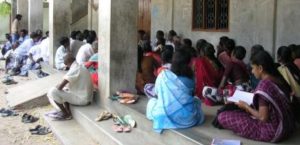
A village meeting discusses details of the post-tsunami resettlement in Nagapattinam, Tamil Nadu, India, in 2008. Photo by Divya Chandresekhar, obtained from Robert Olshansky.
The third point is to “plan and act simultaneously.” The paradox here is that reconstruction can never happen fast enough, yet it is important at times to slow the process down in order to inject some thoughtful deliberation into the process. In short, planners and public officials must learn to work efficiently with limited time to make things happen. In some settings, that may necessitate at least some decentralized decision making to prevent bottlenecks. It becomes essential to learn on the run because not learning can be extremely detrimental.
It is also critical both to budget for the costs of communicating and planning, because these functions are critical to success, and to increase capacity in local governments to make recovery decisions. Effective communication aids empowerment, but so does the ability to hire adequate staff with adequate training. Pushing some of that power and capacity down to individual citizens also expedites decision making. That requires sharing information.

The 2004 Indian Ocean tsunami dramatically affected shoreline communities in Tamil Nadu, India, but fishing families were often reluctant to relocate. Photo by Robert Olshansky (from the book).
The authors also suggest avoiding “permanent relocation of residents and communities, except in rare instances, and then only with full participation of residents.” The risk of forced relocation is greater in more authoritarian and highly centralized systems like that in China, while the U.S. heavily relies on voluntary relocation, and total community relocation remains a rarity. But the consequences of such relocation can be devastating unless the community has bought into the idea and clearly understands how it will benefit—presuming it actually will.
Finally, the authors, again picking up on the theme of time compression after disasters, say, “Reconstruct quickly, but do not be hasty.” Exactly when undue speed becomes haste is, of course, very much a matter of judgment, and good judgment often relies on experience, all of which strongly suggests the value of pre-planning for disasters in order to create the opportunity to evaluate options beforehand and train staff for the eventuality. It might be added that expanding the literature available to them that will expand their familiarity with the issues before disaster strikes is also valuable. This book, in its own way, helps advance that mission.
Jim Schwab
